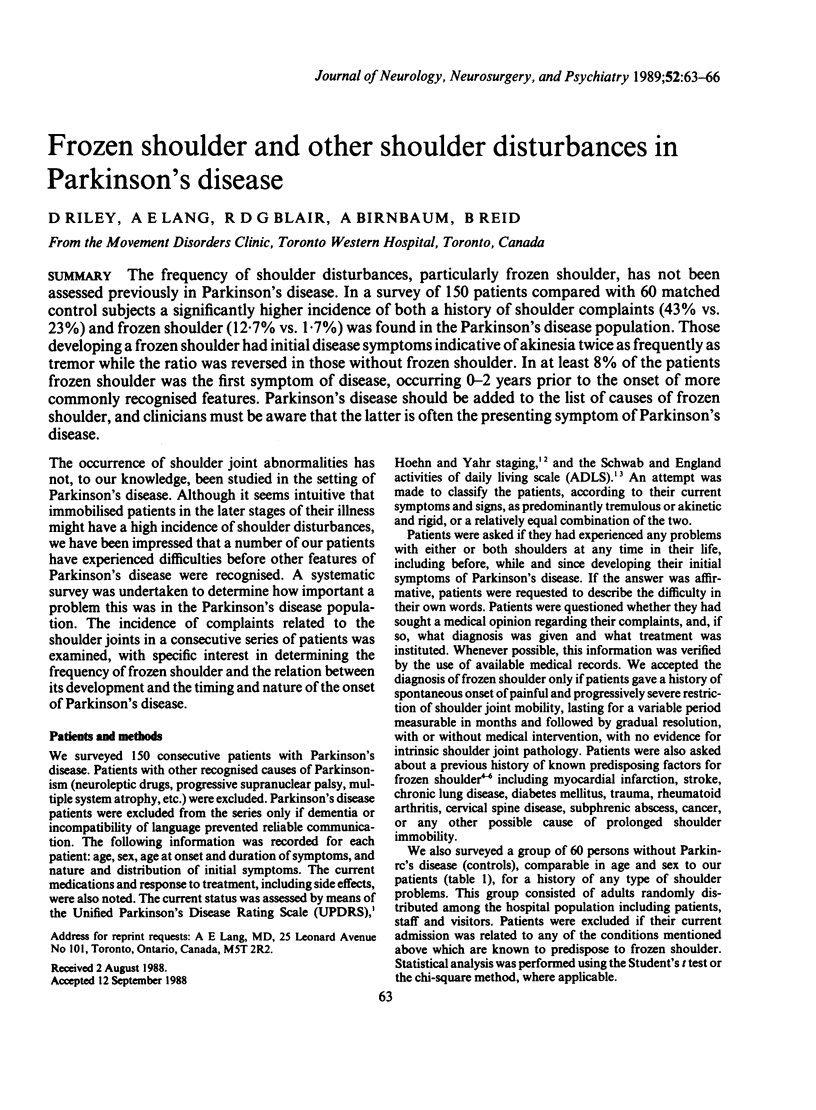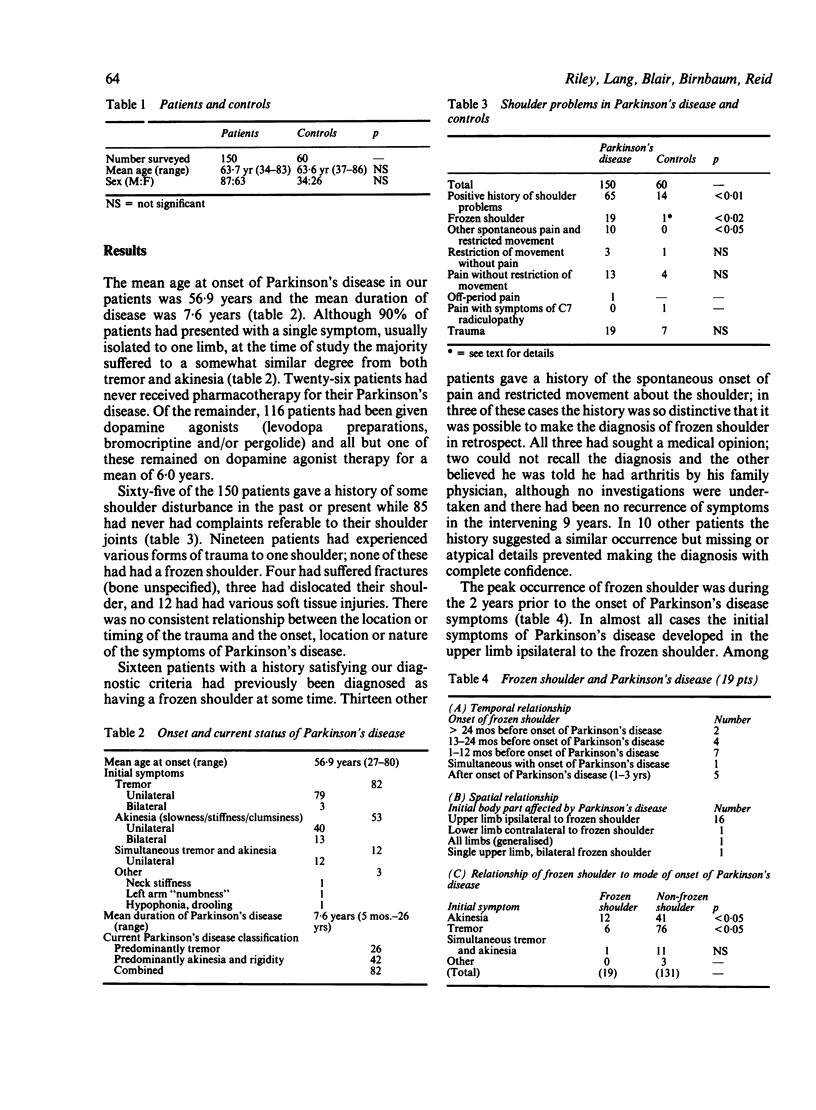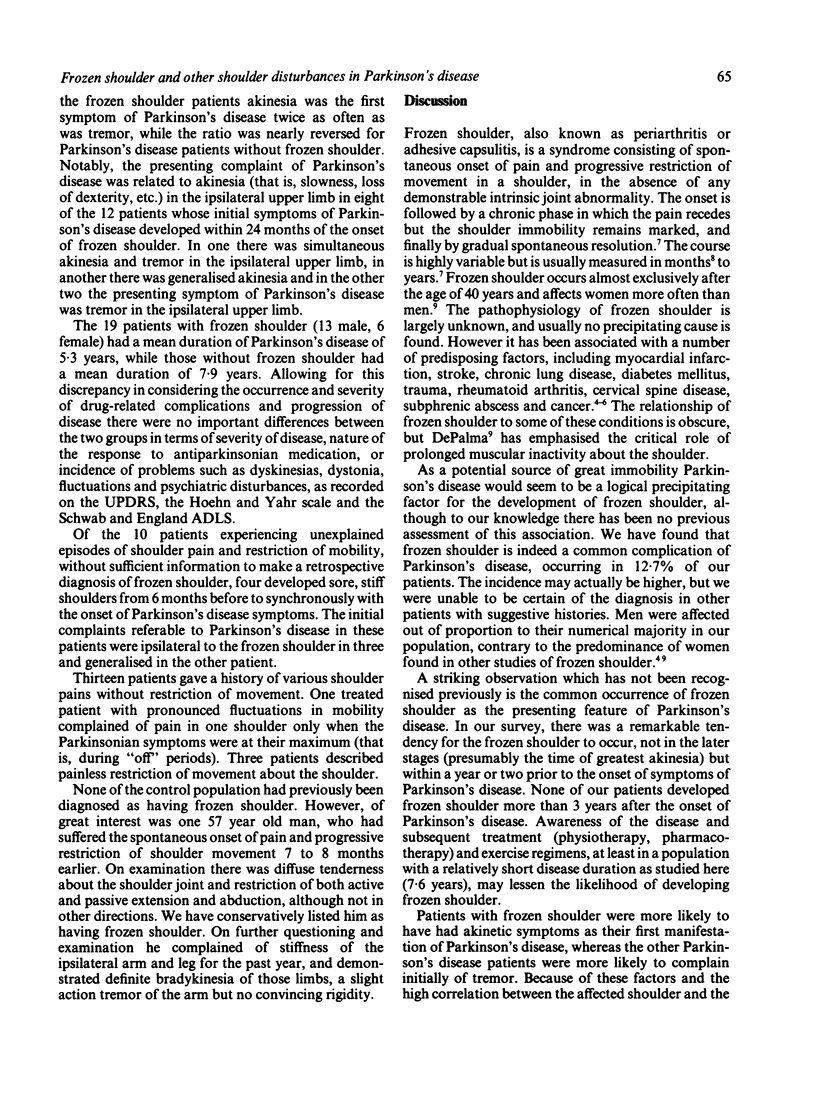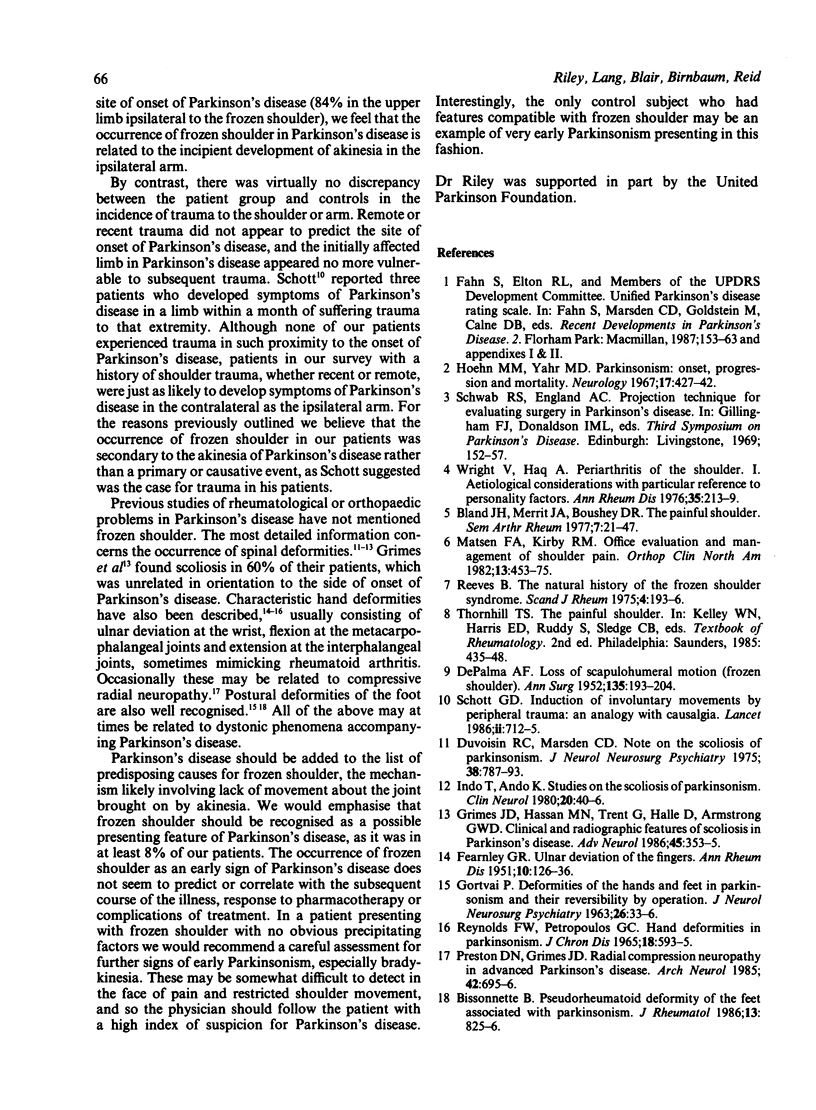Abstract
The frequency of shoulder disturbances, particularly frozen shoulder, has not been assessed previously in Parkinson's disease. In a survey of 150 patients compared with 60 matched control subjects a significantly higher incidence of both a history of shoulder complaints (43% vs. 23%) and frozen shoulder (12.7% vs. 1.7%) was found in the Parkinson's disease population. Those developing a frozen shoulder had initial disease symptoms indicative of akinesia twice as frequently as tremor while the ratio was reversed in those without frozen shoulder. In at least 8% of the patients frozen shoulder was the first symptom of disease, occurring 0-2 years prior to the onset of more commonly recognised features. Parkinson's disease should be added to the list of causes of frozen shoulder, and clinicians must be aware that the latter is often the presenting symptom of Parkinson's disease.
Full text
PDF



Selected References
These references are in PubMed. This may not be the complete list of references from this article.
- Bissonnette B. Pseudorheumatoid deformity of the feet associated with parkinsonism. J Rheumatol. 1986 Aug;13(4):825–826. [PubMed] [Google Scholar]
- Bland J. H., Merrit J. A., Boushey D. R. The painful shoulder. Semin Arthritis Rheum. 1977 Aug;7(1):21–47. doi: 10.1016/s0049-0172(77)80003-6. [DOI] [PubMed] [Google Scholar]
- DEPALMA A. F. Loss of scapulohumeral motion (frozen shoulder). Ann Surg. 1952 Feb;135(2):193–204. doi: 10.1097/00000658-195202000-00005. [DOI] [PMC free article] [PubMed] [Google Scholar]
- Duvoisin R. C., Marsden C. D. Note on the scoliosis of Parkinsonism. J Neurol Neurosurg Psychiatry. 1975 Aug;38(8):787–793. doi: 10.1136/jnnp.38.8.787. [DOI] [PMC free article] [PubMed] [Google Scholar]
- FEARNLEY G. R. Ulnar deviation of the fingers. Ann Rheum Dis. 1951 Jun;10(2):126–136. doi: 10.1136/ard.10.2.126. [DOI] [PMC free article] [PubMed] [Google Scholar]
- GORTVAI P. Deformities of the hands and feet in Parkinsonism and their reversibility by operation. J Neurol Neurosurg Psychiatry. 1963 Feb;26:33–36. doi: 10.1136/jnnp.26.1.33. [DOI] [PMC free article] [PubMed] [Google Scholar]
- Grimes J. D., Hassan M. N., Trent G., Halle D., Armstrong G. W. Clinical and radiographic features of scoliosis in Parkinson's disease. Adv Neurol. 1987;45:353–355. [PubMed] [Google Scholar]
- Hoehn M. M., Yahr M. D. Parkinsonism: onset, progression and mortality. Neurology. 1967 May;17(5):427–442. doi: 10.1212/wnl.17.5.427. [DOI] [PubMed] [Google Scholar]
- Indo T., Ando K. [Studies on the scoliosis of Parkinsonism (author's transl)]. Rinsho Shinkeigaku. 1980 Jan;20(1):40–46. [PubMed] [Google Scholar]
- Matsen F. A., 3rd, Kirby R. M. Office evaluation and management of shoulder pain. Orthop Clin North Am. 1982 Jul;13(3):453–475. [PubMed] [Google Scholar]
- Preston D. N., Grimes J. D. Radial compression neuropathy in advanced Parkinson's disease. Arch Neurol. 1985 Jul;42(7):695–696. doi: 10.1001/archneur.1985.04060070089022. [DOI] [PubMed] [Google Scholar]
- REYNOLDS F. W., PETROPOULOUS G. C. HAND DEFORMITIES IN PARKINSONISM. J Chronic Dis. 1965 Jun;18:593–595. doi: 10.1016/0021-9681(65)90080-9. [DOI] [PubMed] [Google Scholar]
- Reeves B. The natural history of the frozen shoulder syndrome. Scand J Rheumatol. 1975;4(4):193–196. doi: 10.3109/03009747509165255. [DOI] [PubMed] [Google Scholar]
- Schott G. D. Induction of involuntary movements by peripheral trauma: an analogy with causalgia. Lancet. 1986 Sep 27;2(8509):712–716. doi: 10.1016/s0140-6736(86)90231-x. [DOI] [PubMed] [Google Scholar]
- Wright V., Haq A. M. Periarthritis of the shoulder. I. Aetiological considerations with particular reference to personality factors. Ann Rheum Dis. 1976 Jun;35(3):213–219. doi: 10.1136/ard.35.3.213. [DOI] [PMC free article] [PubMed] [Google Scholar]


